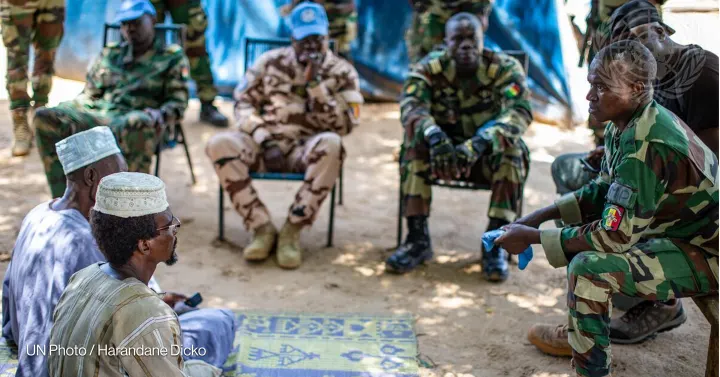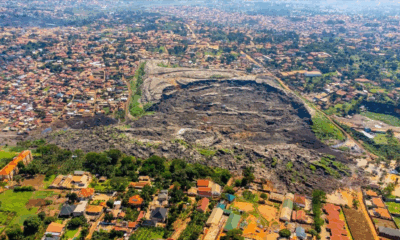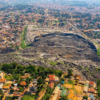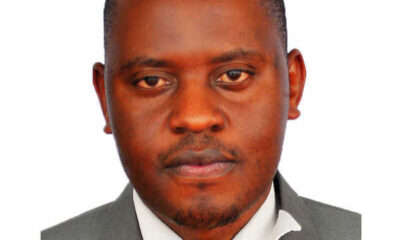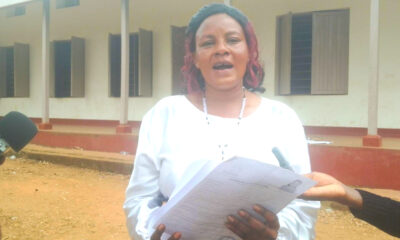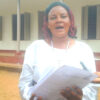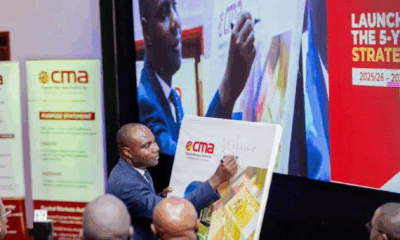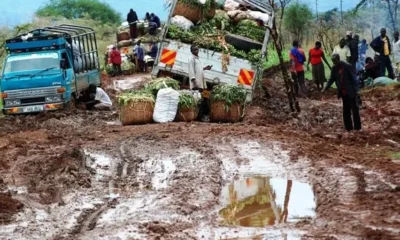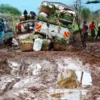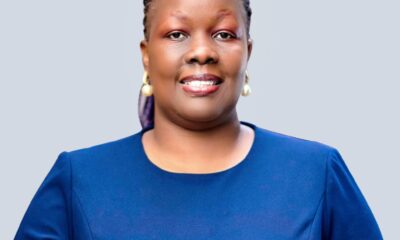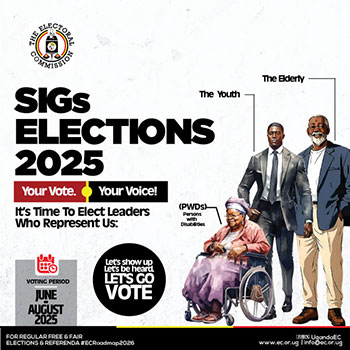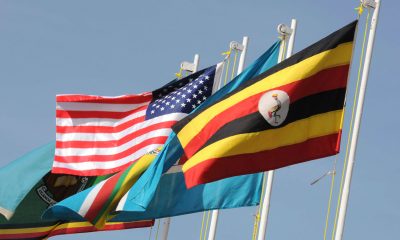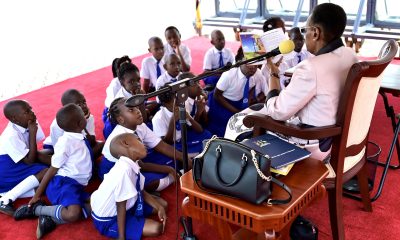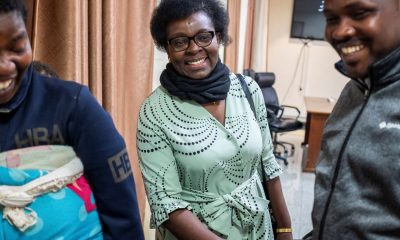Opinions
Hama Amadou Oumarou: Stabilization missions have a lot to learn from Mali and the Sahel
U.N.-led stabilisation missions cannot be merely a checklist of projects, but a nuanced process built on trust, adaptive programming, and genuine local legitimacy.
In 2018, I stood with a local mayor in central Mali reviewing the rubble of a gendarmerie post destroyed by insurgents the night before. Only weeks earlier, the United Nations Security Council had adopted Resolution 2423, expanding the stabilization mandate of the U.N. mission in Mali, known as MINUSMA, to central regions such as Mopti — then engulfed in intercommunal conflict, terrorism, and institutional collapse. We had no additional resources, but the expectation was clear: Deliver “stabilization.”
That 2018 moment crystallized the gap between political aspiration and operational reality — between mandates written in New York and the dynamics unfolding in villages like Ogossagou or Koro. It highlighted how Security Council resolutions often struggle to account for the complex interplay of local grievances, armed group agendas, and fragile state authority on the ground.
In the context of a U.N. peacekeeping mission, stabilization refers to integrated, multidimensional efforts aimed at supporting a country’s transition from conflict or crisis toward sustainable peace, security, and development. Stabilization seeks to create conditions for the restoration of state authority, the protection of civilians, the reestablishment of the rule of law, and the delivery of essential services, particularly in areas affected by violence, armed groups, or weak governance.
These efforts focus on the short to medium term while laying the groundwork for longer-term recovery, peacebuilding, and development initiatives.
While the stabilization ambition in central Mali was clear at the policy level, its practical application required a deeper understanding of context, greater flexibility, and more adaptive approaches rooted in realities far removed from diplomatic conference rooms.
Now, with MINUSMA’s withdrawal completed in early 2024, and international strategies in flux, it is more urgent than ever to redefine what stabilization means in fragile settings such as the Sahel.
A mandate without means
The 2018 Security Council resolution marked a turning point: For the first time, stabilization in central Mali was placed on equal footing with support for the 2015 Algiers Peace Agreement in the north of the country. Yet no additional funding or staff were allocated.
Instead, what I saw in my work at the time overseeing U.N. funding mechanisms, such as the Peacebuilding Fund, the Trust Fund for Peace and Security, and Quick Impact Projects, or QIPs — small, fast-implemented community projects, was a directive to adapt tools built for conflict dynamics in northern Mali to an entirely different — and deteriorating — context in the center.
This disconnect underscored a systemic flaw: The assumption that stabilization could be achieved through bureaucratic reshuffling rather than strategic clarity or local legitimacy.
Stabilization is not a project list
Too often, stabilization is reduced to a list of projects — build a school, hold a youth dialogue, train local police. These efforts have value, but they are not stabilization. In Mali, the term quickly took on symbolic meaning. Community leaders saw it as an opportunity for visibility; underresourced state officials struggled to demonstrate presence. The result was a flurry of activities with limited impact on trust or governance.
In places where we saw real traction — such as in Timbuktu and Taoudéni — it was because stabilization was rooted in existing local governance structures. Projects were co-designed with communities, not imposed from the outside. Trust, not visibility, became the currency of effectiveness.
Adaptation in a moving conflict
The Sahel’s volatility demands more than log frames and five-year strategies. In Mali, we adopted an adaptive programming model built on three principles:
1. Rapid local assessments with civil society and municipal officials.
2. Rolling fund allocation to respond to conflict changes in real time.
3. Joint monitoring teams composed of U.N. staff, government reps, and community members.
This flexibility allowed us to pivot quickly. When attacks halted humanitarian convoys in Mopti, we reallocated QIP funding to reinforce community protection and support local mediation efforts. These adjustments — though small — were more impactful than rigid plans disconnected from local rhythms.
Legitimacy over presence
A recurring assumption in stabilization efforts is that increasing state presence leads to stability. But in many parts of Mali, communities equated state presence with neglect or abuse. Informal groups — traditional leaders, women’s peace committees, religious authorities — often held far more legitimacy than appointed officials.
Effective stabilization recognized and worked with these groups. In Timbuktu, we partnered with women’s associations and traditional leaders to prioritize community needs. When people felt ownership, they protected and sustained the process. Where they were excluded, projects were sabotaged, politicized, or ignored.
Coordination isn’t optional
With MINUSMA, U.N. agencies, NGOs, and donors all working in overlapping spaces, coordination was not a luxury, it was a necessity. But institutional silos often made this difficult.
As part of the deputy special representative’s office, I helped lead joint planning with the U.N. country team to align stabilization efforts with humanitarian and development activities. We linked small-scale stabilization QIPs with broader programs. For example, ensuring a water point built under stabilization funds aligned with UNICEF’s water, sanitation and hygiene, or WASH, strategy. We also used these joint mechanisms to engage donors more effectively, resulting in a 40% increase in trust fund contributions over six years.
This was our version of the “Triple Nexus” — an integrated approach that connects humanitarian relief, development planning, and peacebuilding. But in practice, it only worked when driven by shared planning at the local level, not by headquarters mandates.
What the Sahel can teach the world
As the international community recalibrates in the wake of MINUSMA’s drawdown, Mali offers four key lessons for global stabilization efforts:
• Make it political again. Stabilization must focus on rebuilding trust, governance, and legitimacy — not just delivering services.
• Decenter the state. Work with informal and hybrid groups that communities already trust.
• Fund adaptively. Move beyond rigid project cycles and allow for real-time responses.
• Coordinate early. Establish joint planning across humanitarian, development, and peace groups at the regional level.
Stabilization is not a checklist of outputs. It is a long-term, negotiated process that requires humility, flexibility, and deep local engagement. As attention shifts from military deployments to political settlements and community resilience, we must shed one-size-fits-all models and meet fragile societies on their own terms.
If stabilization is to mean anything, it must be redefined — not as a technical fix, but as a collaborative journey toward dignity and peace.
Hama Amadou Oumarou is a senior international development and crisis response professional with over 20 years of experience in the United Nations system, including roles as chief of stabilisation and recovery and senior program manager with MINUSMA.
Comments



